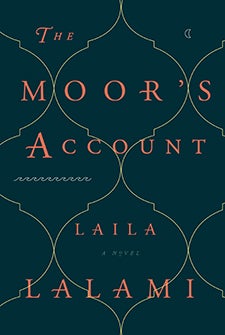
Estebanico’s Turn to Speak
In 1527, Spanish conquistador Pánfilo de Narváez led 600 men across the Atlantic Ocean to what is now the Gulf Coast of the United States. Their goal was to claim land for the Spanish crown.
From the get-go, the expedition seemed doomed. The ships were battered in storms. After encountering disease and starvation, the once formidable crew was whittled down to just four survivors within a year: three Spanish noblemen and a Moroccan slave called Estebanico.
In her new book The Moor’s Account (Pantheon Books) due out Sept. 9, USC Dornsife alumna Laila Lalami imagines the survivors’ experiences in the New World through the eyes of Estebanico. The outcome of the Narváez expedition was originally chronicled by one of the survivors, Álvar Núñez Cabeza de Vaca, and addressed and dedicated to King Charles V.
The historical-fictional account presented an opportunity to explore the gaps in Cabeza de Vaca’s chronicle, which is written from the perspective of “a brave conquistador who is carrying the word of God to Native Americans, and whose intentions are always noble,” Lalami said.
“What I’m interested in is creating an alternate history,” she said. “The facts are the same, but the truth is different because you’re looking at it from a different perspective.”
Cabeza de Vaca’s account does not include any mention of women, or much about the Native Americans he and his cohort encountered, she noted.
“I was able to show things that were hinted at but not mentioned in his book, like torture, rape, murder and theft, and call them by their names,” Lalami said.
Lalami, who earned her Ph.D. in linguistics from USC Dornsife in 1997, is an associate professor of creative writing at the University of California, Riverside. Five years ago, while reading a book about Moorish Spain, she learned about Estebanico’s presence on the expedition — and his survival.
Estebanico is believed to be one of the first black explorers of America. Following the botched expedition, Estebanico and the other three survivors traveled throughout North America. Indigenous tribes regarded them as curious outcasts, and eventually the foursome presented themselves as faith healers along their journey.

The Moor’s Account (Pantheon Books), due out Sept. 9, tells the story of the ill-fated Narváez expedition through the eyes of Estebanico, a Moroccan slave. The historic fiction draws on the true story of four survivors of the 16th century expedition.
That information planted a seed for a new novel in Lalami, who is author of the short story collection Hope and Other Dangerous Pursuits (Algonquin Books, 2005), a finalist for the Oregon Book Award, and the novel Secret Son (Algonquin Books, 2009), which was on the Orange Prize longlist.
“When I first thought of writing the book, frankly I was terrified,” Lalami said. “I thought, I don’t have enough knowledge about the history of the era. Then, after a while I thought this is such an interesting story I have to write it. If I don’t write it who else will? So I ended up diving in head first.”
She immersed herself in the subject, studying various accounts of the Narváez expedition, as well as 16th century Azemmour, Morocco, and Seville, Spain. She learned that not much was known about Estebanico except that he was an Arab-speaking Moor from Azemmour.
Both Estebanico and Lalami share the same home country of Morocco, but that is where the similarities end.
“It was very challenging because I was writing from the perspective of this person who is not only not the same gender as me but is not even from the same era,”Lalami said. “He had different ways of looking at the world. But, that’s what’s fun about writing. You get to exercise your imaginative empathy and create this character.”
Lalami nurtured her love for writing while at USC Dornsife. She studied psycholinguistics, focusing on the ways people process ambiguity in sentence structure. Whenever she could fit it into her busy academic schedule, she took creative writing classes at USC, which she said were fun and helpful.
She began concentrating on writing — and getting published — after working as a computational linguist at a company that created information management software. After her first book was published, Lalami joined the faculty at UC Riverside where she teaches at both the undergraduate and graduate levels.
Lalami has a knack for languages. In addition to English, Lalami, who is originally from Rabat, Morocco, also speaks Arabic, Spanish and French. She said her linguistics training blends into her writing.
“When you’re a writer everything you experience goes into your writing,” Lalami said.
For Lalami, Morocco is a recurring thread that connects her writing. Both of her previous publications were set in or featured characters from the North African country.
“It’s interesting because even though I left Morocco when I was younger, in some sense Morocco continues to live in me,” Lalami said.
That’s why Estebanico’s story resonated so deeply with her.
“The idea for this book came to me because Estebanico was a Moroccan explorer. I was curious about that and wanted to write about it,” Lalami said.
“I definitely don’t think we have too many stories set in Morocco, so it’s fun to bring your country to life in fiction.”